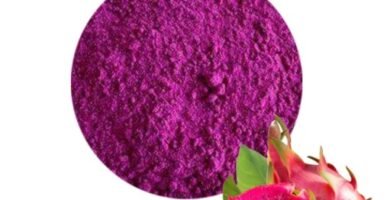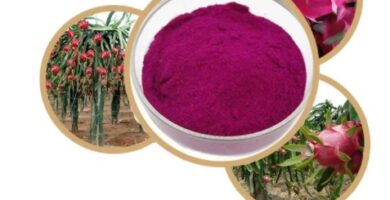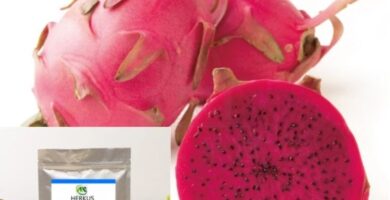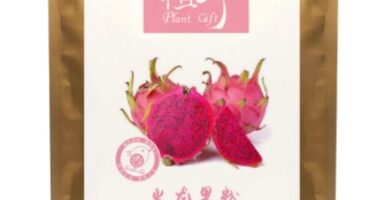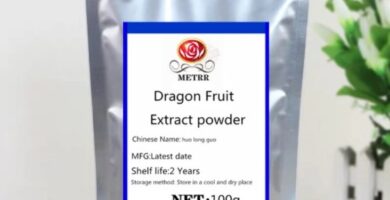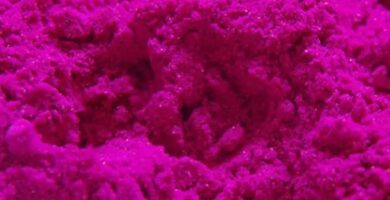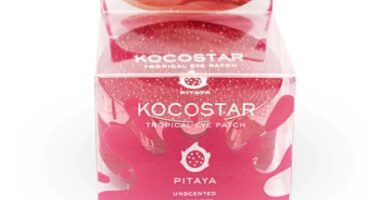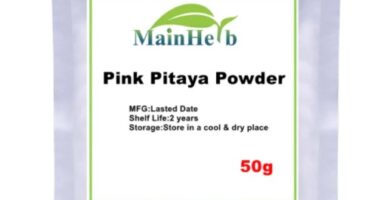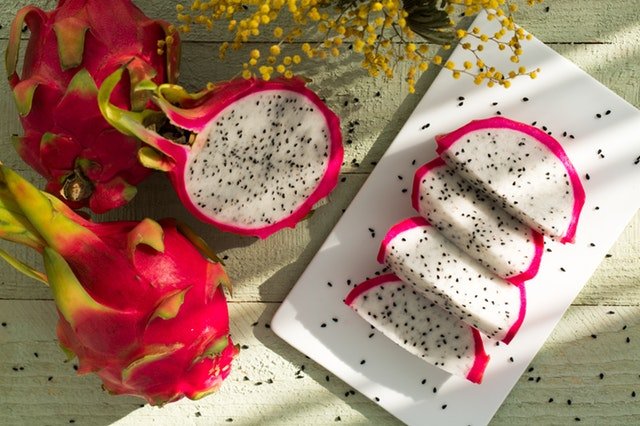
Discover here the surprising benefits of pitahaya, its nutritional value, its properties and medicinal uses, and some ideas for its consumption.
The fruit of the pitahaya, pitaya or Dragon Fruit has incredible health benefits, mainly due to its high content of betalains, pigments that have antioxidant properties.
Due to the presence of these pigments, fruits of the Cactaceae family have been proposed as a promising source of natural food colorants (Stintzing et al., 2003).
Pitaya products on sale!
Antioxidant properties
The red species is valued for the production of betalains, which are water-soluble nitrogen pigments usually found in plant vacuoles. They are divided into betacyanins and betaxanthins (Strack et al., 2003).
Treviño, J. (2000) reports the finding of betaxanthins in 100 g of pitahaya pulp, which have the bromatological properties, nutritional value and little alteration during processing suitable for the preparation of food products.
These advantages for agribusiness have increased international interest in this crop, both for commercialization and for the search for processing alternatives. (See: How to plant pitahaya)
The mesocarp is the edible part of the pitahaya fruit and consists of a mucilaginous paste with hundreds of small edible seeds or from which oil with laxative properties of potential use in the pharmaceutical industry can be obtained (Ariffin et al., 2009).
Nutritional value
Pitahaya species (Hylocereus spp.) have an interesting nutritional value, even in the species H. undatus, high contents of protein, fiber and essential minerals have been found (Rodríguez, A. 1997).
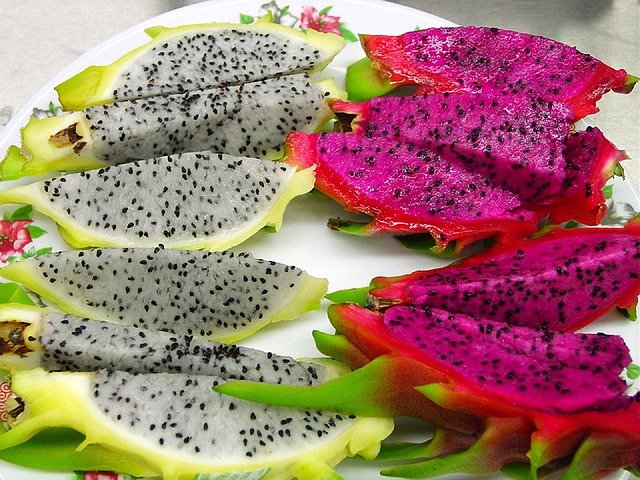
Imageby skeeze at Pixabay
The soluble solids content is basically glucose and fructose (Stintzing et al., 2003; Vaillant et al., 2005). The oligosaccharide content indicates prebiotic properties, such as resistance to stomach-like acidic conditions and resistance to the enzyme amylase.
In the nutritional aspect, in 100 g of its edible part, pitahaya contains:
- 54 Kcal,
- 89.4 g of water
- 1.2 g of protein,
- 0.4 g fat,
- 15 g of carbohydrates,
- 0.8 g of fiber,
- 0.6 g of ashes,
- 0.36 mg of thiamine,
- 0.04 mg of riboflavin,
- 0.2 mg niacin and
- 25 mg of ascorbic acid;
- 50 mg of sodium,
- 8 mg of calcium,
- 30 mg of phosphorus,
- 0.6 mg of iron,
- 339 mg of potassium
- 200 mg of magnesium in the pulp and seeds (Becerra, 1986; FAO, 1996).
Pitahaya Consumption and Benefits
Its main use is for consumption as fresh fruit; it can also be used in cocktails, soft drinks, tea, beer and wine (Becerra, 1987).
The flowers are consumed as a legume and the buds of the stems in salads, the fruits possess cactin (hordenine), which is used as a cardiotonic that acts as a tonic for the heart and as a calming agent for the nerves.
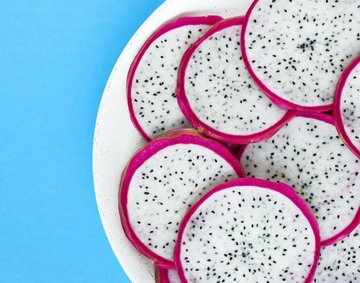
Pitahaya stems and shells are used as fodder for livestock; it is also appreciated by poultry (García, M., 2003).
In addition to the fruits, pitahaya stems are used as a vegetable and medicine.
Medicinal uses of Pitahaya
In Mexico, the liquefied stem is used for the treatment of kidney stones, elimination of amoebas, to relieve headaches and tired feet; it is also used as a disinfectant and in the treatment of sores and skin tumors (García, 2003).
The seeds contain an oil with a mild and effective laxative effect (Becerra, 1987).
In addition, the burned peel is used for the treatment of hemorrhoids (Yetman, 2006).
The flowers, known as “queen of the night”, are very attractive and different infusions are prepared with them to alleviate heart diseases.
The positive effect of betalains against stress-related disorders in humans is due to their potential to inhibit oxidation and lipid peroxidation (Kanner et al., 2001).
Anti-inflammatory and antiradical effects , antioxidant activity have been observed and the inhibitory effect of betanin on melanoma cell growth has also been described (Gentile et al., 2004).
The biological importance of these pigments lies in the fact that they can exhibit antibacterial and antiviral activity and can be taxonomic markers.
Hylocereus costaricensis pulp extract has been suggested as an effective agent to enhance male fertility, after observing an increase in sperm count and viability after oral administration of fruit extracts in mice (Abdul-Aziz and Mat-Noor, 2010).
Bibliography
- Abdul-Aziz, Farid and Mat-Noor, Mahanem. 2010. Ethanol extract of dragon fruit and its effects on sperm quality and histology of the testes in mice. Biomedical Research. 21(2):126-130.(PDF)
- Ariffin, Abdul Azis; Bakar, Jamilah; Tan, Chin Ping; Rahman, Russly Abdul; Karim Roselina and Loi, Chia Chun. 2009. Essential fatty acids of pitaya (dragon fruit) seed oil. Food Chemistry. 114(2):561-564.(Source)
- Becerra, L. (1986). The cultivation of pitaya. Bogota: National Federation of Coffee Growers of Colombia (PDF).
- Becerra, L. (1987). Pitaya: a crop with a future. Modern Horticulture, (5):7-10. (PDF)
- García, M.C. 2003. Pitaya: harvest and postharvest. Bogotá: Corpoica-Pronatta. Ministry of Agriculture and Rural Development (PDF).
- Gentile, C.; Tesoriere, L.; Allegra, M.; Livrea, M.A. and D “Alessio, P. 2004. Antioxidant betalains from cactus pear (Opuntia ficus-indica) inhibit endothelial ICAM-1 expression. Annals of the New York Academy of Sciences. 1028:481-486.(Source)
- Kanner, Joseph; Harel, Stela and Granit, Rina. 2001. Betalains – a new class of dietary cationized antioxidants. Journal of Agricultural and Food Chemistry. 49(11):5178-5185.(Source).
- morphological and chemical fruit traits from different pitaya genotypes (Hylocereus sp.) grown in Costa Rica. Journal of Applied Botany and Food Quality. 81(1):7-14.
- Quintero, M. L (October 25, 2020) “Benefits of pitahaya for health and beauty” retrieved from pitaya.store.
- Stintzing, Florian C.; Schieber, Andreas and Carle, Reinhold. 2003. Evaluation of colour properties and chemical quality parameters of cactus juices. European Food Research and Technology. 216(4):303-311.(Source)
- Treviño, J. (2000). Comparative study of the chemical components of callus and seedling Stenocereus griseus (Haworth) Buxabaum. Thesis in science with specialization in botany. Autonomous University of Nuevo Leon. School of Biological Sciences. Graduate Studies Division (PDF).
- Vaillant, Fabrice; Pérez, Ana; Dávila, Indiana; Dornier, Manuel and Reynes, Max. 2005. Colorant and antioxidant properties of red-purple pitahaya (Hylocereus sp.). Fruits.60(1):3-12.(PDF)
- Yetman, D. (2006). The organ pipe cactus. Plant Science Bulletin, 53(2)(Book)

Biólogo – Universidad de Oriente – núcleo de Sucre. Venezuela (2013). Profesora de Biología hasta el 2018 de la Universidad de Oriente – núcleo Bolivar. Certificada en gestión de calidad e inocuidad alimentaria ISO 22000 y gestión de la calidad en laboratorios ISO 17025. Actualmente vive en Ecuador. Senescyt Nro. 8622122546
Related articles:
May 13, 2024
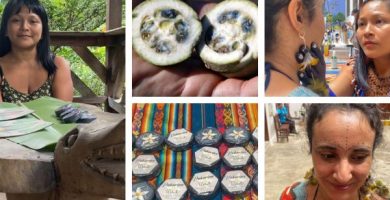
12 reasons why using wituk (Genipa americana)
February 9, 2024
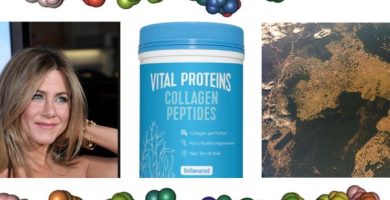
The collagen industry and deforestation in the Amazon: discover sustainable alternatives
August 12, 2022
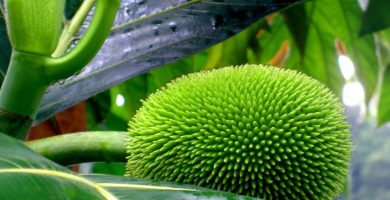
Breadfruit Tree (Artocarpus altilis)
October 29, 2020
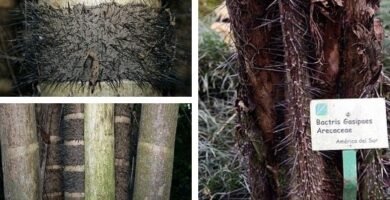
Chonta or chontaduro (Bactris gasipaes)
October 2, 2020
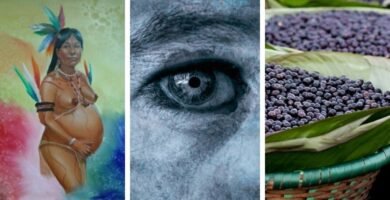
Acai, the tragic legend of the palm tree that saved an Amazonian tribe
September 18, 2020
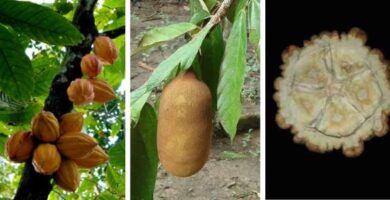
Theobroma (genus): cocoa, grandiflorum, bicolor (+ 22 species)
September 2, 2020
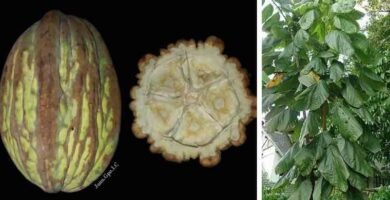
Mocambo (Theobroma bicolor) The Jaguar Tree
June 21, 2020

Sacha Inchi (Plukenetia volubilis L.) The Inca Peanut – Benefits
June 18, 2020

Pitomba, a fruit with surprising medicinal properties!
This post is also available in:
![]() Español (Spanish)
Español (Spanish)

